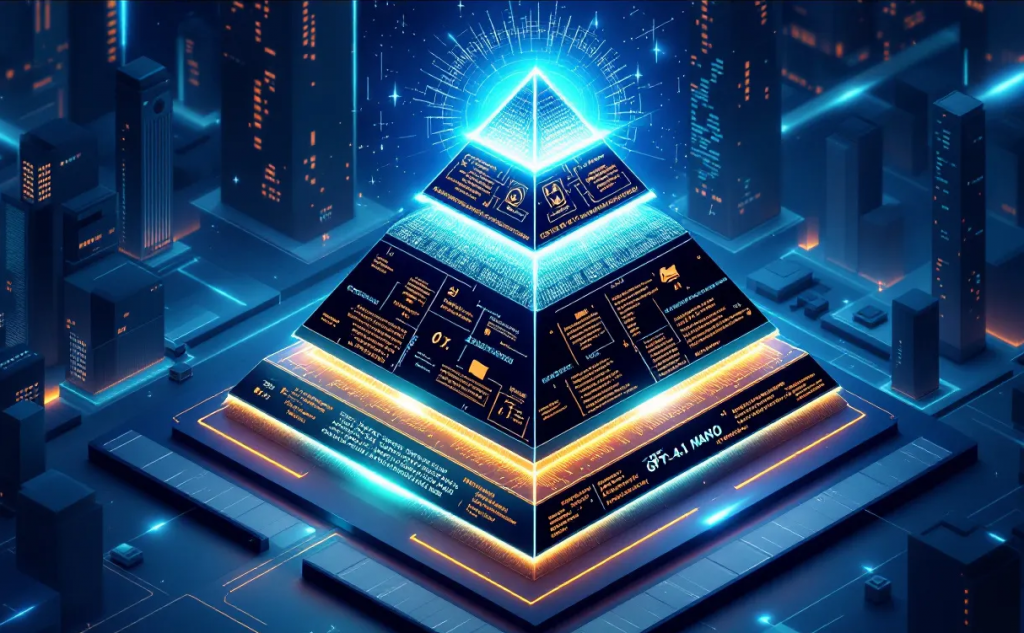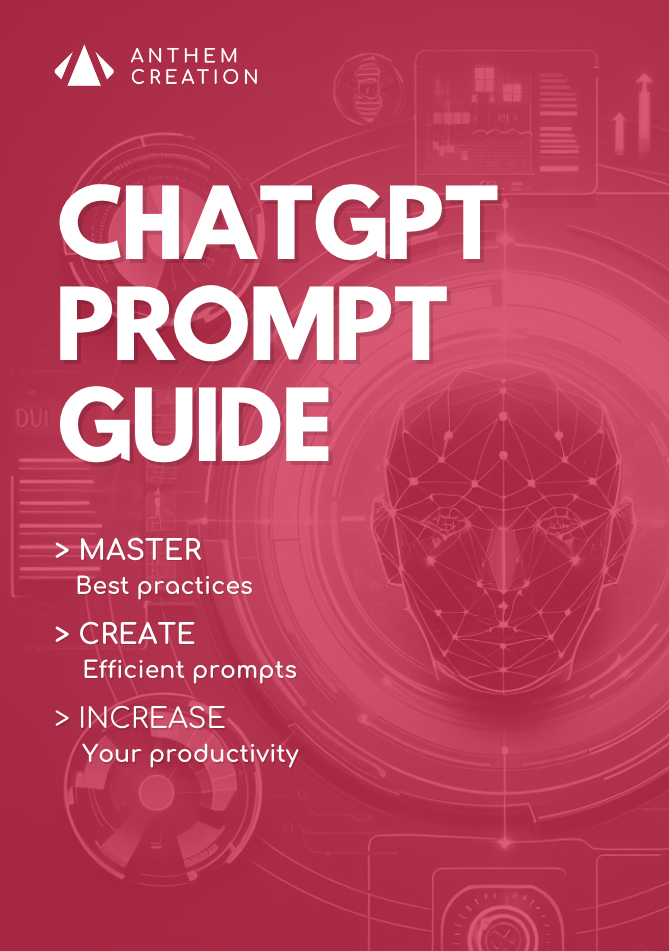Revealed on April 14, 2025 by OpenAI, the GPT-4.1 models are not just an update – they represent a quantum leap for generative artificial intelligence.Specifically designed to meet the needs of developers, these new models outperform their predecessors with dramatic improvements in code generation, understanding complex instructions and processing massive contexts.
These models completely redefine what it means to integrate AI into a professional technical workflow – it’s like moving from a junior assistant to an experienced software architect.
Available exclusively via the OpenAI API and partner platforms such as Microsoft Azure, they are already establishing themselves as the new must-have reference for technical teams.

Adaptable power: three models for every need
The GPT-4.1 family comes in three complementary versions, each meeting specific needs:
GPT-4.1 – The elite brain
The flagship of this new generation particularly shines in tasks requiring deep understanding and sophisticated code generation. Ideal for projects where quality comes first.
GPT-4.1 mini – The perfect balance
A true technical tour de force, this lighter version offers a cost reduction of 83% compared to the previous GPT-4o, while maintaining equivalent or superior performance. The ideal compromise between power and budget.
GPT-4.1 nano – The economical lightning bolt
Ultra-fast and incredibly economical, this model excels at classification or autocomplete tasks. Perfect for applications requiring instant responses without compromising relevance.
This modular approach finally allows companies of all sizes to adopt generative AI without compromise, by choosing precisely the right level of power for each situation.
Code like never before: technical mastery redefined
On the ultra-demanding SWE-bench Verified benchmark, GPT-4.1 achieves an impressive score of 54.6% – a 21.4% improvement on its predecessor! This performance is due to major advances:
- Production of cleaner and more intuitive
- Superior ability to identify necessary changes in existing code without unnecessary additions
- Strict compliance with requested output formats, essential for integration into CI/CD pipelines
An in-depth test of JavaScript refactoring operations has demonstrated that GPT-4.1 reduces compilation errors by 37%, while significantly improving the readability of the code produced.
King context: a million tokens at your service
One of the most spectacular advances lies in the ability to process up to 1 million tokens as input – the equivalent of around 700,000 words or 2,000 pages of code!
This massive popup radically transforms:
- Analyzing large codebases
- Understanding extensive technical documentation
- Processing complex video streams
This massive contextual capability finally eliminates one of developers’ biggest frustrations: having to artificially chop up their problems so that they “fit” within the model’s boundaries.
On the Video-MME benchmark, focused on understanding long multimedia content, GPT-4.1 achieves 72% accuracy without subtitles, outperforming previous models by 6.7 points.
Surgical precision: follow your instructions to the letter
Scale’s MultiChallenge benchmark reveals a staggering 10.5% improvement in multi-step instruction following over GPT-4o.
In practical terms, this translates into:
- A near-perfect interpretation of specified technical constraints
- An enhanced ability to navigate complex decision trees
- Remarkable adaptation to custom coding styles
In a real-world application, integrating GPT-4.1 into a REST API generation pipeline helped reduce manual reviews by 42%, with OpenAPI specifications met with unprecedented accuracy.
The economic equation: power and accessibility
OpenAI introduces a stratified pricing structure that makes these advances accessible to all budgets:
- GPT-4.1: $2 per million tokens in, $8 out
- GPT-4.1 mini: $0.40/$1.60, combining performance and economy
- GPT-4.1 nano: $0.10/$0.40, unbeatable for light but frequent tasks
Microsoft Azure complements this offering with customized fine-tuning options, enabling companies to adapt templates to their proprietary codebases or specific industry standards – a crucial feature for highly regulated industries such as finance or healthcare.
The concrete impact: results that speak for themselves
Companies that have adopted these new models early on report productivity gains that defy imagination:
- 58% reduction in debugging time in a Python machine learning project
- Automatic generation of technical documentation aligned 92% with internal standards
- Automation of 74% of React 19 migration tasks in an enterprise application
These numbers don’t represent mere marginal optimizations – they reveal a fundamental transformation in the way technical teams can design and maintain their projects.
Seamless integration with GitHub Copilot and Azure DevOps now creates a unified ecosystem where AI amplifies every aspect of the software development lifecycle.
Towards the horizon: what the future holds
The rollout of GPT-4.1 is accompanied by the deprecation of GPT-4.5 in the API, signaling a strategic consolidation of OpenAI’s technical offering. The announced roadmap includes:
- Expanding multimodal capabilities (analysis of technical images, interpretation of architectural diagrams)
- Native integration of database connectors
- Strengthened mechanisms for security verification of generated code
These innovations position GPT-4.1 not just as a tool, but as an essential development partner for technical teams aiming for excellence.
The combination of revolutionary technical capabilities with flexible business models paves the way for mass adoption that could redefine software industry standards for years to come.
FAQ – ChatGPT 4.1 for developers
When will GPT-4.1 models be available to the general public?
GPT-4.1 models are currently available exclusively via the OpenAI API and partner platforms such as Microsoft Azure. OpenAI has not yet announced a date for wider public availability.
What’s the main difference between GPT-4.1 and GPT-4o?
The most significant difference is in code generation performance, with a 21.4% improvement on the SWE-bench Verified benchmark. GPT-4.1 also offers a one million token popup window (vs. 128K for GPT-4o) and 10.5% improved multi-step instruction tracking.
Are GPT-4.1 models cost-effective for small businesses?
Yes, thanks to the stratification of the models. While the full GPT-4.1 may seem expensive, the mini and nano versions offer economical alternatives suitable for smaller structures, with cost reductions of up to 83% compared to GPT-4o.
How does GPT-4.1 concretely improve developers’ daily lives?
It significantly reduces the time spent debugging (up to 58% in some case studies), automates the generation of technical documentation with 92% accuracy, and facilitates complex technology migrations such as those to React 19 (74% automation).
Can GPT-4.1 be customized for specific needs?
Yes, Microsoft Azure offers fine-tuning options to adapt templates to proprietary codebases or specific industry standards, particularly useful for highly regulated industries.
Can GPT-4.1 completely replace human developers?
No, GPT-4.1 is designed as an assistance tool that amplifies developers’ capabilities rather than replacing them. It excels at automating repetitive tasks and speeding up development processes, but still requires human supervision for critical architectural decisions.
How does GPT-4.1 handle less common programming languages?
GPT-4.1 demonstrates improved performance on a wide range of programming languages, including less common ones. However, its performance remains optimal on the most popular languages such as Python, JavaScript, Java, and C++.
Are there limits to the contextual capacity of a million tokens?
While this capacity is impressive, processing such long contexts can lead to increased response times and costs. It is recommended to use this feature in a targeted way for projects that really benefit from it.
What security measures are built into GPT-4.1?
GPT-4.1 incorporates improved mechanisms for verifying the security of generated code, significantly reducing the risk of vulnerabilities. Nevertheless, OpenAI still recommends a human review before production implementation.
How does GPT-4.1 fit into existing development environments?
Integration is facilitated by native connectors with GitHub Copilot and Azure DevOps. Plugins for major IDEs such as VSCode, IntelliJ and Eclipse are also available, enabling a fluid experience directly in the developer’s usual working environment.
AI NEWSLETTER
Stay on top of AI with our Newsletter
Every month, AI news and our latest articles, delivered straight to your inbox.

CHATGPT prompt guide (EDITION 2024)
Download our free PDF guide to crafting effective prompts with ChatGPT.
Designed for beginners, it provides you with the knowledge needed to structure your prompts and boost your productivity
With this ebook, you will:
✔ Master Best Practices
Understand how to structure your queries to get clear and precise answers.
✔ Create Effective Prompts
The rules for formulating your questions to receive the best possible responses.
✔ Boost Your Productivity
Simplify your daily tasks by leveraging ChatGPT’s features.
Similar posts
GPT-4o Mini : AI performance, speed and economy
The GPT-4o-mini model is distinguished by several specific features that make it unique and particularly suitable for certain types of application. Here are the main features of GPT-4o-mini: Compact size …
GPT-4o vs. GPT-4o-mini: which AI model to choose?
OpenAI has recently introduced two new models that are generating a lot of interest: GPT-4o and GPT-4o-mini. Although these models share a common technological base, they are designed to meet …
GPT model distillation via API : OpenAI’s new game-changing advance
OpenAI recently announced a major breakthrough in artificial intelligence with the launch of model distillation available via its API, detailed on their official page. This innovation enables developers and enterprises …


